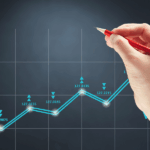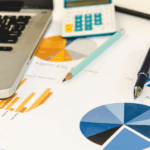The resumption of student loan collections in the United States has stirred significant concerns over potential economic impacts. As the Department of Education reinitiates collection efforts after a prolonged suspension, financial experts predict a substantial decrease in consumer expenditure. This decline stems from the financial strain placed on millions of borrowers who are expected to start loan repayments, some for the first time since receiving these loans.
Various analyses reveal that the looming risk of student loan defaults traces back to the policy suspensions initiated during the pandemic. Previous reports highlighted the temporary relief, including a pause on loan payments starting March 2020, which provided a critical financial reprieve for many. This relief period is now nearing its end, compelling borrowers to reassess budgetary allocations and prioritize loan repayments over other spending.
Economic Impacts: Who Will Feel the Pinch?
A stark forecast from Bloomberg Economics warns of a $63 billion annual drop in consumer spending. Beth Akers, an economist at the American Enterprise Institute, emphasizes the dire situation confronting borrowers, many of whom remain unprepared for the sudden shift in their financial responsibilities.
“They’re facing this jarring news — that their loans, which had no consequences tied to them for five years, suddenly have very big consequences,”
Akers remarked.
Is the Federal Response Adequate?
With approximately 42.7 million borrowers collectively owing over $1.6 trillion in student debt, the Federal Student Aid office will now proceed with collections. Secretary of Education Linda McMahon expressed the necessity of guiding borrowers back into repayment.
“Going forward, the Department of Education…will shepherd the student loan program responsibly,”
she stated. Despite these plans, the number of borrowers either in default or nearing it points to a growing concern over economic stability.
The Department of Education’s report indicates nearly 10 million borrowers could default soon, raising concerns about the scale of financial distress. This potential mass default scenario underscores the challenges in the current strategy as only 38% of borrowers are actively repaying their loans, raising questions about the long-term effectiveness of the collection efforts.
As administrations navigate these challenges, comparisons to past strategies suggest that temporary relief measures, while impactful short-term, may not suffice in curbing the long-term socio-economic repercussions. In the absence of further intervention, consumer spending—the backbone of economic growth—might continue to decline, impacting broader financial sectors.
The resumption of student loan collections represents a critical juncture for financial planning on borrower and federal levels. The expected decrease in consumer spending signals broader economic implications, ranging from individual financial stability to national economic growth prospects. Continued adaptation and monitoring remain crucial for anticipating outcomes and supporting economic recovery effectively.










